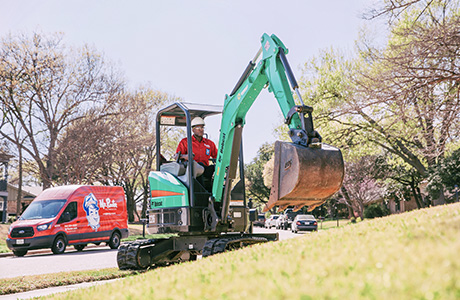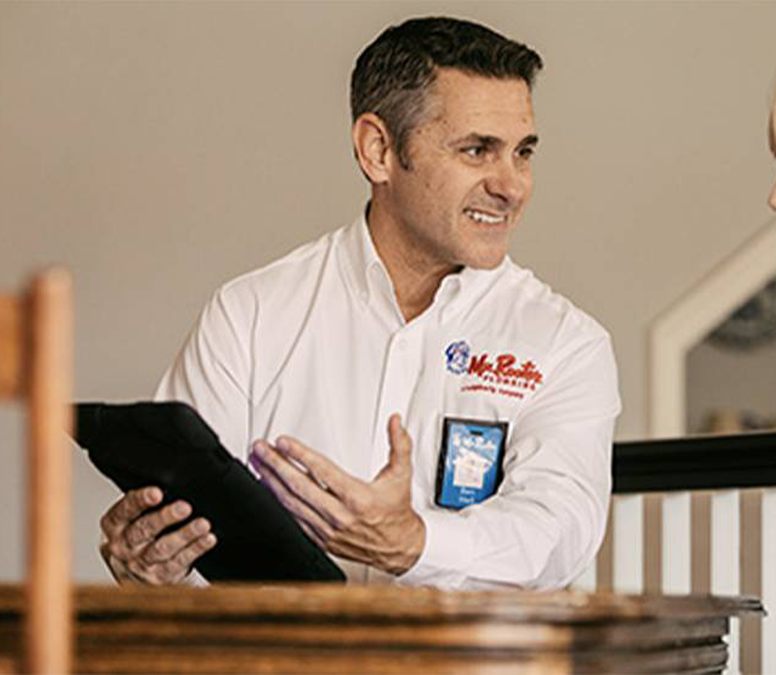Call This Sunday to Get $50 Off Any service over $500
Do You Need a Local Plumber in Waco, TX?
Call us Now to Get $35 OFF.
Call This Sunday to Get $50 Off Any service over $500
Do You Need a Local Plumber in Waco, TX?
Call us Now to Get $35 OFF.

The plumbing system is the cornerstone of modern sanitation and public hygiene, and the sewer line is a vital component. This piece of plumbing connects the household or building’s drains to the sewer main which leads to the wastewater treatment facility. The significance of the sewer line makes issues that much more devastating. In this brief article brought to you by Mr. Rooter Plumbing, we’ll share six of the most common types of sewer line problems you may face. We’ll also share some tips on how to prevent or reduce the risk of these headaches.
If you suspect sewer line problems and need sewer repair or even a sewer line replacement, then call Mr. Rooter Plumbing to hire a uniformed plumber. Mr. Rooter Plumbing is a reputable business with decades of industry experience. We offer a wide range of plumbing service, and our live representatives are on standby to take your call today.
Slow drainage and sudden backups in multiple drains or sinks are telltale signs of a clogged sewer line. Non-biodegradable items, grease, and debris are just some of the things that can accumulate over time, strangling the flow of the drains and sewer line. If you want to prevent this issue, then be mindful of what goes down the drain. Properly dispose of fats, oils, and grease in the trash, use drain catchers to trap hair and debris, and avoid flushing non-flushable items down the toilet.

Tree roots’ quest for water can take an unwelcome turn as they seek refuge within your sewer pipes. Tiny cracks or joints become gateways for these tenacious intruders, leading to blockages and potential damage. Vigilance is key. Plant trees a safe distance from the sewer line and opt for trees with shallow and manageable root systems. Regular inspections by professionals can help detect root intrusion early and prevent a potential catastrophe.
Though pipes are mostly resilient and durable, they are still vulnerable to corrosion over time. Iron and steel are particularly susceptible. Consider replacing corroded pipes with modern alternatives, like PVC or HDPE. Additionally, controlling water acidity and installing dielectric unions to prevent galvanic corrosion can significantly extend pipe life.
Subtle shifts in soil, erosion, or settling can cause sewer pipes to sag or develop bellies. These low points tend to collect debris and gunk, undermining the optimal flow of wastewater. It’s important to leave sewer line installation to professionals who will properly prepare the lot for the sewer line. Also, regularly inspect sewer lines using cameras to detect early signs of sagging.
Father Time and Mother Nature like to work together to create cracks and damage in sewer pipes. External pressures, intense temperature fluctuations, ground movement, and shifts in soil can lead to fractures that compromise the structural integrity of the system. Keep heavy vehicles and equipment away from the sewer line and implement proper soil stabilization techniques to reduce the risk of ground movement-related damage.
Though bellied pipes and fractures are bad, they are not as disastrous as a complete collapse of the sewer line. Age, corrosion, and soil pressure can trigger this catastrophic event, resulting in a complete blockage and wreaking havoc on the plumbing system. Periodic inspections are essential if you want to prevent this costly sewer line problem.
Embarking on a bathroom renovation is the perfect opportunity to address any shortcomings, enhance the…
Water bills have been rising at twice the rate of inflation, and there are many…
If your showerhead has started leaking, the water pressure keeps fluctuating, or the diverter valve…